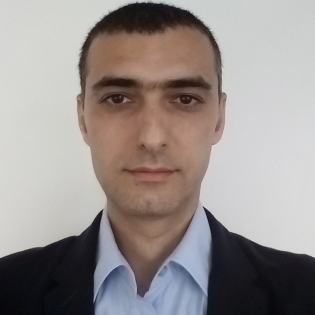Invited Speaker

Dr. Selim Bozkurt
Institute of Cardiovascular Science, University College London, UKSpeech Title: Computational Modelling of Patient-Specific Craniosynostosis Correction
Abstract: Craniosynostosis is a condition in which fibrous sutures in an infant skull fuses prematurely and turns into bone. Unicoronal craniosynostosis (UC) and Lambdoid Craniosynostosis (LC) are two different types craniosynostosis affecting the forehead and back of the head. UC is the second most common type of nonsyndromic craniosynostosis and characterised by ipsilateral forehead and fronto-parietal region flattening with contralateral compensatory bossing. It is a complex condition; therefore, difficult to treat because of the asymmetry in the orbits and cranium. LC is a rare non-syndromic craniosynostosis characterised by fusion of the lambdoid sutures at the back of the head. Surgical correction including the spring assisted cranioplasty is the only option to correct the asymmetry at the skull in LC. However, the aesthetic outcome from spring assisted cranioplasty may remain suboptimal. Computational simulations allow testing of the effect of different osteotomies, spring locations and required forces, therefore, parametric finite element (FE) models could allow optimisation of function and aesthetic outcomes in surgical craniosynostosis corrections. The aim of this study is to develop patient-specific parametric FE models for the patients affected by UC and LC, which simulate spring assisted skull correction and biological mechanisms such as skull growth. The skull geometries from UC and LC patients who underwent surgical correction were reconstructed from the pre-operative computed tomography (CT) images in Simpleware ScanIP. Skull growth and surgical intervention were simulated using MSC Marc FE software. The simulation results show a good agreement with post-operative CT scans and provide insights about the potential treatment techniques which can be used to correct craniosynostosis in future.
Keywords: craniosynostosis, spring assisted cranioplasty, unicoronal craniosynostosis, lambdoid craniosynostosis, finite element analyses
Biography: Dr. Selim Bozkurt studied Mechanical Engineering at Eskisehir Osmangazi University in Turkey. He obtained his master’s degree in Mechanical Engineering from Yeditepe University where he also worked as a research assistant in a project aiming to design, analyse and prototype production of a miniature implantable rotary blood pump. Then, he started his PhD research at the department of Biomedical Engineering of Eindhoven University of Technology in the Netherlands and did research on arterial pulsatility and aortic valve function to evaluate continuous flow left ventricular assist device support. In his PhD study, he transformed the commonly used steady flow LVAD into a dynamic flow LVAD, thus showing the beneficial effect of pulsatile support over steady flow support on aortic valve behaviour and perfusion rates using in-silico, in-vitro and ex-vivo techniques. After receiving his PhD degree in 2014, Dr. Bozkurt joined the Mechanical Engineering department of University College London where he worked as a research associate and developed the metallic wireframe of a novel bi-leaflet transcatheter mitral valve. Currently, he works at the Institute of Cardiovascular Science and Great Ormond Street Institute of Child Health in UCL aiming to simulate surgical correction of craniosynostosis in paediatric patients.
